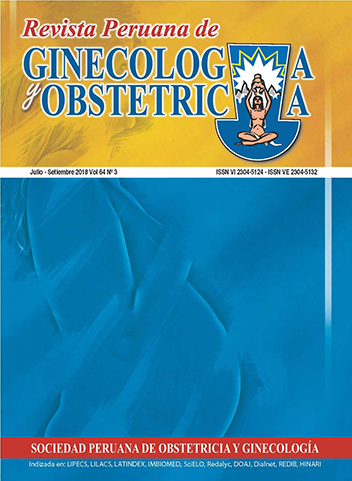Fetal growth restriction and angiogenic factors: a new horizon
DOI:
https://doi.org/10.31403/rpgo.v64i2096Abstract
Fetal growth restriction is intimately linked to the placental function due to its failure of adequately nurture and oxygenate the fetus, with consequences in the short and long term. The search for the best definition and best diagnostic biomarkers has currently led to angiogenic factors closely related to the placenta formation and development. Placenta hypoperfusion has been linked to alterations in the levels of angiogenic factors, and it is proposed that these could help to differentiate the fetuses truly affected by chronic hypoxia even before the late adaptive hemodynamic changes are evident by Doppler ultrasound. This could have implications not only in the definition of growth restriction but also in the potential prediction of the event.Downloads
Download data is not yet available.
Downloads
Published
2018-09-28
How to Cite
Lacunza Paredes, R. O., & Ávalos Gómez, J. (2018). Fetal growth restriction and angiogenic factors: a new horizon. The Peruvian Journal of Gynecology and Obstetrics, 64(3), 353–358. https://doi.org/10.31403/rpgo.v64i2096
Issue
Section
Artículos de Revisión
















